Pope Francis: The modernising pontiff who alienated conservatives
The first South American pope brought a freewheeling spirit to the papacy but angered more traditional members of the Catholic Church.
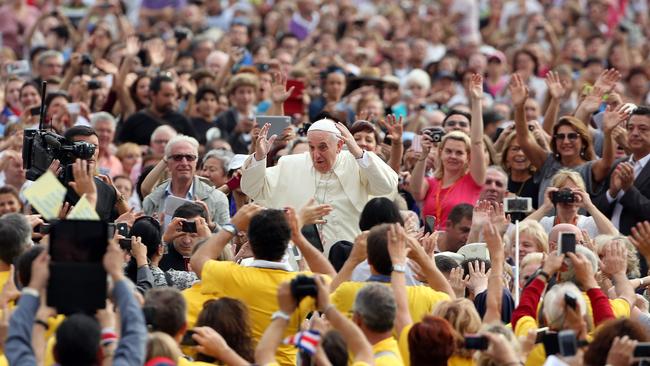
The morning Pope Francis realised that the Swiss Guard outside his bedroom door had been on duty all night, he allegedly invited the plume-helmeted soldier to share his breakfast.
“But … I’ll be fired,” stammered the guard. “And who is your boss?” inquired Francis.
Francis I, who in 2013 became the first South American to become pope, brought a Latin frankness and freewheeling spirit to the papacy. None of the 265 previous pontiffs could say that they had once worked as a nightclub bouncer, nor had they been a skilful dancer of the tango.
Succeeding Pope Benedict in 2013, Francis favoured an informal style, eschewing the trappings of the papacy. He dressed simply in white and his shoes, it was quickly noted, were battered. Rather than living in the lavish apartments reserved for the pope, he opted to lodge in a Vatican guesthouse. Quizzed over his simple lifestyle choices, Francis replied: “My people are poor, and I am one of them.”

He was sensitive to those living on the “periphery” of society. On his birthday, he invited beggars to join him for breakfast. The homeless found a friend in Francis, who installed showers for them in St Peter’s Square and found a barber to offer them free weekly haircuts. He yearned to honour the dignity of those on society’s edges. When his biopic Chiamatemi Francesco (Call Me Francis) was released in Rome, he invited 7000 refugees and homeless people sleeping rough to the premiere.
The ‘Francis revolution’: a radical church reform agenda
Some began to speak of a “Francis revolution”. The term was apt: many who had been alienated from the church returned, or looked with fresh eyes at an institution often viewed as corrupt. And he would introduce a radical agenda to reform the church and equip it for the challenges of a technological age defined by climate change and mass migration.
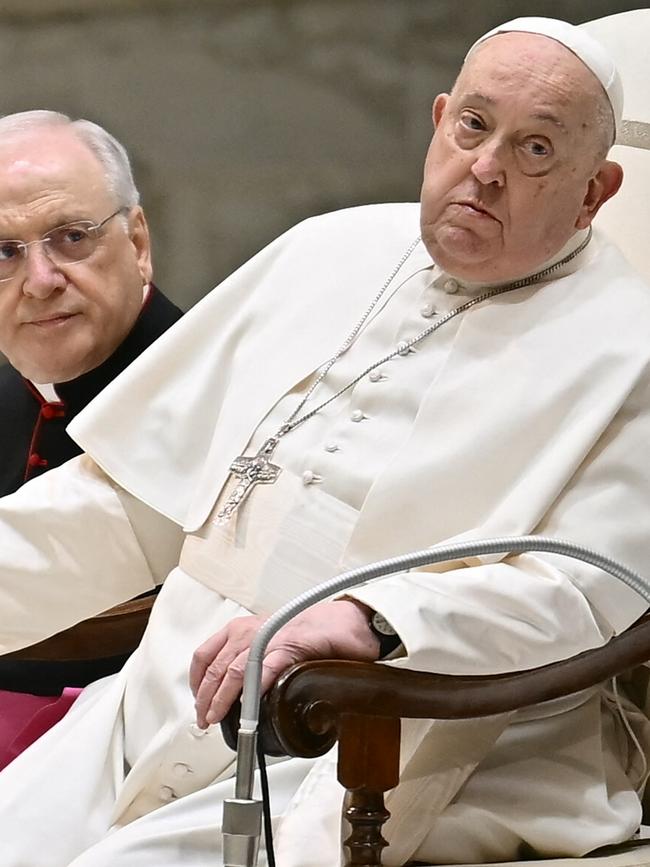
Yet his light was dimmed by scandals, not least by the suggestion, made in 2018 by a former Vatican envoy to the United States, that Francis had ignored a report accusing an American cardinal of seducing trainee priests. Archbishop Carlo Maria Vigano claimed that Francis had neglected a dossier he had handed him on the indecent activities of Cardinal Theodore McCarrick, once archbishop of Washington. Furthermore, Vigano claimed that McCarrick, who Francis eventually defrocked, had been subject to sanctions by Francis’s predecessor, the quieter Pope Benedict XVI.
Benedict was a shy intellectual, at home with Mozart and his cats, who embraced the regalia of papacy, nestling in ermine-trimmed capes and favouring red shoes. Francis, in contrast, said he was a “priest of the streets”.
By 2019, the two popes were embroiled in a controversy. To the horror of orthodox Catholics, Francis appeared to suggest that the church might overturn a centuries-long ruling that only single men might be ordained as priests to counter a severe shortage of clergy in the Amazon region. When delegates to the Amazon Synod brought statues of the Pachamama – an indigenous female goddess representing Mother Earth – into Roman churches, traditionalist Catholics declared them idols. Militants threw the statues into the River Tiber.

Benedict v Francis
The priorities of the two popes had differed starkly from the outset: Benedict sought to restore the Tridentine-Rite Latin liturgy used in the Catholic Church before 1962. Francis, who would in time reverse Benedict’s liturgical reforms, devoted his first visit as pope outside Rome to meeting refugees fleeing Africa on the Mediterranean island of Lampedusa. He would later urge each Catholic parish in Europe to house at least one family of refugees and brought 12 people from Syria to Rome. There he opened the first Vatican office dedicated to migrants; the logo was a cross encircled by a lifejacket.
Some Catholics, including, though not exclusively, those to the theological left, adored Francis. Those in the conservative mainstream were alarmed by what sometimes appeared to be ambiguity on moral doctrine, in contrast to the crystal-clear stance of previous pontiffs such as Pope John Paul II.
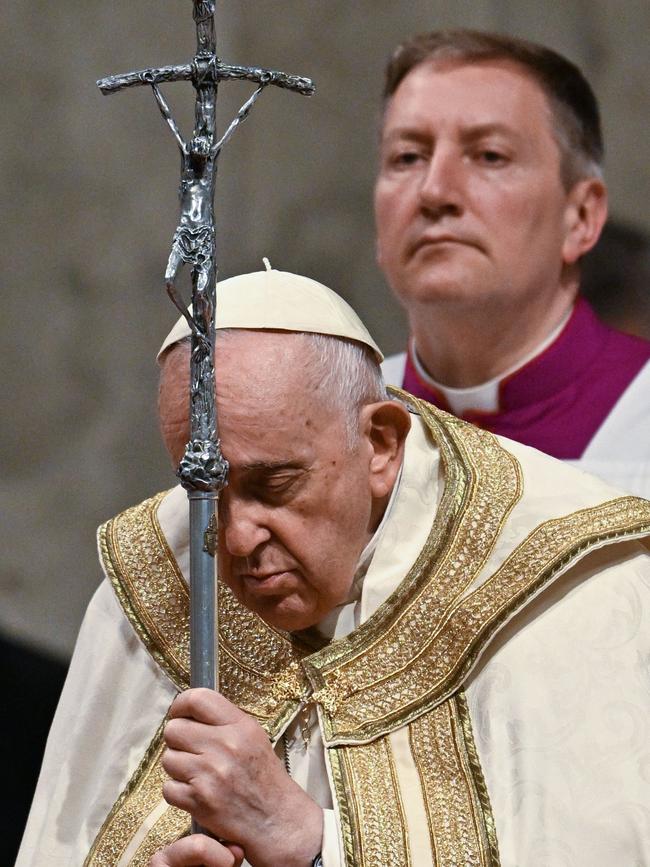
Matters reached a crux with the publication in 2016 of Amoris Laetitia (The Joy of Love), written by Francis at the conclusion of a two-part synod discussing the modern family. An early draft had shown unexpected warmth towards the LGBT community, stating “homosexuals have gifts and qualities to offer to the Christian community”. More revolutionary still was a phrase on gay relationships: “Without denying the moral problems connected to homosexual unions it has to be noted that there are cases in which mutual aid to the point of sacrifice constitutes a precious support in the life of the partners.”
Such language was heralded with joy by gay celebrities. Sir Elton John declared Francis his “hero” after his remarks, including: “If a person is gay and seeks God and has good will, who am I to judge?”. Yet the final draft of Amoris Laetitia exuded a distinctly chilly tone, stating that no comparison might remotely be drawn between gay unions and heterosexual marriages. “Nevertheless, men and women of homosexual tendencies must be welcomed with respect and sensitivity.”
Pope Francis went further in December 2023 when he issued Fiducia Supplicans (Supplicating Trust), authorising priests to give “spontaneous” non-liturgical blessings to same-sex couples, while making it clear that the church would not and could not offer the sacrament of marriage.
The pastoral measure, though applauded by pro-LGBTQ+ rights Western clergy, was roundly condemned by bishops across Africa, including in Malawi, Zambia, and Cameroon and elsewhere, such as Poland.
Reportedly he also informed one Catholic LGBTQ+ ministry – though the Vatican denied this – that he wanted to appoint trans-friendly bishops in the United States.
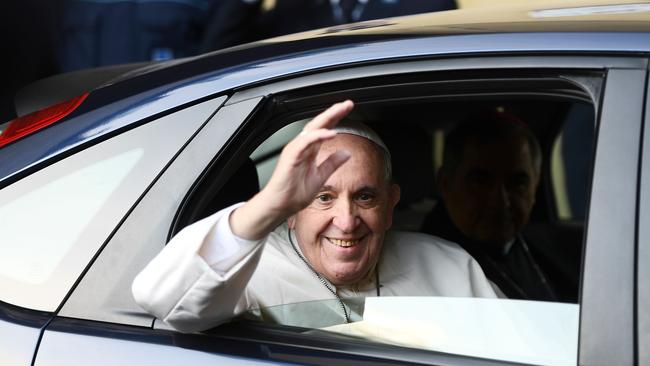
A divided flock and radical synod
It was clear that Francis led a divided flock. Many conservative Catholics were perturbed by his unpredictable statements, such as saying people who identify as trans can be godparents, while bloggers on the far-right fringes of Catholicism nicknamed the Pope “Mr Jorge Bergoglio – whom the world calls ‘Pope Francis’ ”.
In 2021, Francis instigated the preparations for Synod on Synodality, by inviting bishops in every Catholic diocese in the world to consult jobbing priests and lay Catholics about their concerns. The official description of the synod said the aim was to help the church “deepen in an understanding of her mission and look towards the future”. A questionnaire was produced to record participants’ attitudes to Catholic teaching. The exercise was to culminate in a synodal assembly, or meeting of the world’s bishops, in Rome in October 2023 and October 2024.
The synod was radical: the first ecclesial gathering to include male and female lay Catholics, rather than only bishops. Seating arrangements were egalitarian: Cardinals and bishops were placed next to lay Catholics at round tables, whose shape was chosen to avoid any sense of hierarchy.
The synod alarmed conservative Catholics, who feared the process was code for reversing traditional church teaching, but those on the theological left welcomed it as a breath of fresh air, equivalent to “Vatican III” or a timely, reforming church council. Yet for some, especially in Germany, the synod did not go far enough. Catholics pressing for a change to church teaching via the “Synodal Way” process begun in Germany in 2020 were rebuked by Francis.
“Germany has a great Protestant church, but I don’t want another one,” he said. Some feared the German Catholic Church was on the cusp of splitting from Rome.
Ultimately, liberal hopes that the synod would lead to radical changes of doctrine were disappointed. A particular upset involved the ordination of women as deacons, regarded as the first step towards the church ordaining female priests. Francis removed the topic from the agenda for mainstream synodal discussion, asking a committee to study it further, despite the topic emerging as a main concern in the pre-synodal consultation.
Condemning pedophile clergy
Divisions aside, Francis’s informality surprised constantly: just after his election he called his newspaper vendor in Buenos Aires to cancel his subscription over the phone. He also called survivors of sexual abuse by priests to apologise on behalf of the church. One such call, which surprised the survivor who was in his car at traffic lights, prompted the first big investigation into clerical abuse in Spain.
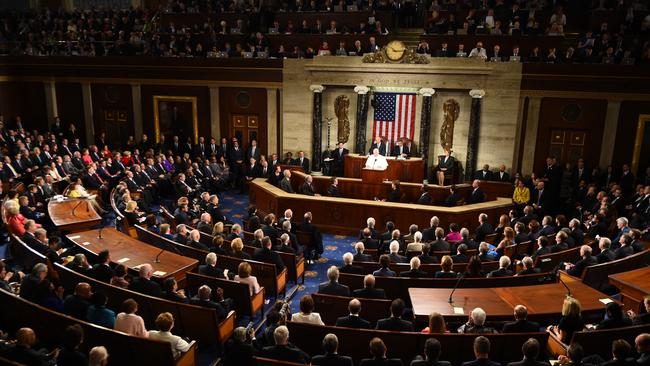
Francis roundly condemned pedophile clergy in Father, I Forgive You, a book written by Daniel Pittet, a French survivor of clerical sexual abuse. “How can a priest at the service of Christ and his church cause so much harm? Some of the victims have been driven to suicide. These deaths weigh on my heart, on my conscience,” Francis wrote in the foreword.
However, his suspicion that some accusations constituted “gossip” occasionally blinded his judgment. In 2016, five Argentinian priests accused Bishop Gustavo Zanchetta of “authoritarianism, financial mismanagement and sexual abuse” at a seminary in the diocese of Oran. Zanchetta appealed to Francis, who gave him a desk job at the Vatican while he travelled to Spain for psychotherapy. In March 2022, Zanchetta returned to Argentina for a court case and subsequently began a four-year prison term after being convicted of the “continued and aggravated sexual abuse of two seminarians”.
Even Francis’s fans sometimes cringed at a style of leadership that at times appeared crass, or at best insensitive and thoughtless. He put his foot in his mouth repeatedly. He upbraided as “irresponsible” an astonished Philippine mother of eight for having so many children. Often, Francis excoriated Catholics for gossip, a sin he compared, somewhat surprisingly, to terrorism.
“Calumny,” was his reply to journalists who asked him about his promotion of a Chilean bishop who had been accused of protecting a pedophile cleric. Within hours, Francis had apologised to those who had survived abuse at the hands of Father Fernando Karadima. He dispatched the archbishop Charles Scicluna to Chile and New York to interview Karadima’s victims. The subsequent 2300-page report led Francis to make a public apology, saying he had been “gravely mistaken in my judgment and perception of the situation”.
He invited three Chilean survivors of abuse by Karadima to Rome, to apologise to them face to face. “I was part of the problem,” he admitted, to the men’s surprise. All 34 Chilean bishops were summoned to Rome and tendered their resignations to him.
Francis never had much truck with popularity, remarking crisply: “Jesus also, for a certain time, was very popular, and look at how that turned out.” He preferred to describe himself as “a sinner at whom Christ has gazed”.
Jorge Mario Bergoglio: The first South American pope
Jorge Mario Bergoglio was born in 1936 in a suburb of Buenos Aires. He was the eldest child of Mario Jose, an Italian accountant employed by the Argentinian railways after migrating from Piedmont. The young Bergoglio imbibed thriftiness from his family: they stitched their savings into their coat linings before leaving Italy. When his mother, Regina Maria (nee Sivori), became paralysed after the birth of her fifth child, he learnt to cook. Later, on Sundays, he would prepare his signature dish, stuffed calamari, for his students at the seminary of Buenos Aires.

Bergoglio’s mother yearned for her son to become a doctor. While a teenager, on the day he decided to tell a girl he was in love with her, he entered a church and went to confession. He began to feel a call to priesthood but did not inform his mother. “Jorge, you’ve lied to me!” she declared, after discovering his plans on a chance visit to his bedroom. His retort: “No, mother, I’m studying medicine for souls.”
Jorge obtained a diploma in chemistry from a technical high school in Argentina. In 1958, he joined the Society of Jesus. Part of his lung was later removed after a severe bout of pneumonia, but despite ill health, on December 13, 1969, he was ordained a priest. After further studies in Spain he was professed a Jesuit. In 1973, at age 36, he was appointed provincial of the Jesuits in Argentina.

Three years later the country’s armed forces seized power in a coup. Bergoglio’s tenure as leader coincided with the subsequent bloodshed during Argentina’s military dictatorship, which lasted until 1983. He was accused of denouncing a pair of Jesuits kidnapped and tortured by the Argentinian navy.
Only later did it emerge that Bergoglio had twice appealed directly to General Jorge Videla, the Argentinian dictator, for the men’s freedom. According to Austen Ivereigh, the papal biographer, Francis hid many endangered Argentinians, including Marxist friends, in the seminary of Buenos Aires on the pretext that they were attending retreats. He once donated his identity card and dog collar to a persecuted Argentinian who resembled him and whom he drove to the country’s border. Yet in public, he did not denounce the dictatorship.
As archbishop of Buenos Aires, a role he was appointed to in 1998, Bergoglio enjoyed a reputation as approachable amid his three million-strong flock. He spoke daily on the telephone to the priests he had dispatched as troubleshooting pastors in the drug-ridden “villas”.
Being Pope was never an ambition. Discovering in 2005 that a bloc of cardinals in the conclave voting for John Paul II’s successor wanted to vote for him rather than Cardinal Ratzinger (the future Pope Benedict XVI), Bergoglio begged them, tears in his eyes, to desist. In February 2013 Benedict XVI stepped down. This time Bergoglio could not escape. He was elected the 266th pope on March 13 that year, exactly a month after Benedict’s shock resignation.
So little known was Francis that many journalists asked who he was. The first Jesuit Pope, he chose the name Francis after the saint of Assisi, the son of a merchant who sacrificed riches for a life of simplicity. The new pope insisted on visiting the hotel where he had been staying in Rome to pay his bill in person. It remained a source of regret that he could not simply slip out from the Vatican to enjoy a pizza.
Radical shake-up of Vatican finances
Francis established a commission, headed by cardinal George Pell, a tough Australian, to peer into the tangled finances of the Vatican. However, his skill at choosing advisers was thrown into question when Pell was accused of sexually abusing two teenage choirboys. (In 2018, Pell was ordered to stand trial in Australia and later imprisoned. In 2020, his conviction was overturned and after spending a year in jail he was set free.)

Francis’s mantra, “a poor church for the poor”, led to a radical shake-up of Vatican finances. He stripped the Secretariat of State, the main political and diplomatic organ of the Holy See, of any power to invest money or handle property after it emerged that one of its key functionaries, Cardinal Angelo Becciu, had used charitable donations to purchase a multimillion-pound property in London’s Chelsea and then suffered losses of some £100m ($197m). Becciu’s 5½-year prison sentence after the conclusion of “the trial of the century” in December 2023 added further grist to those who claimed that Francis was presiding over a corrupt and decadent Vatican administration.
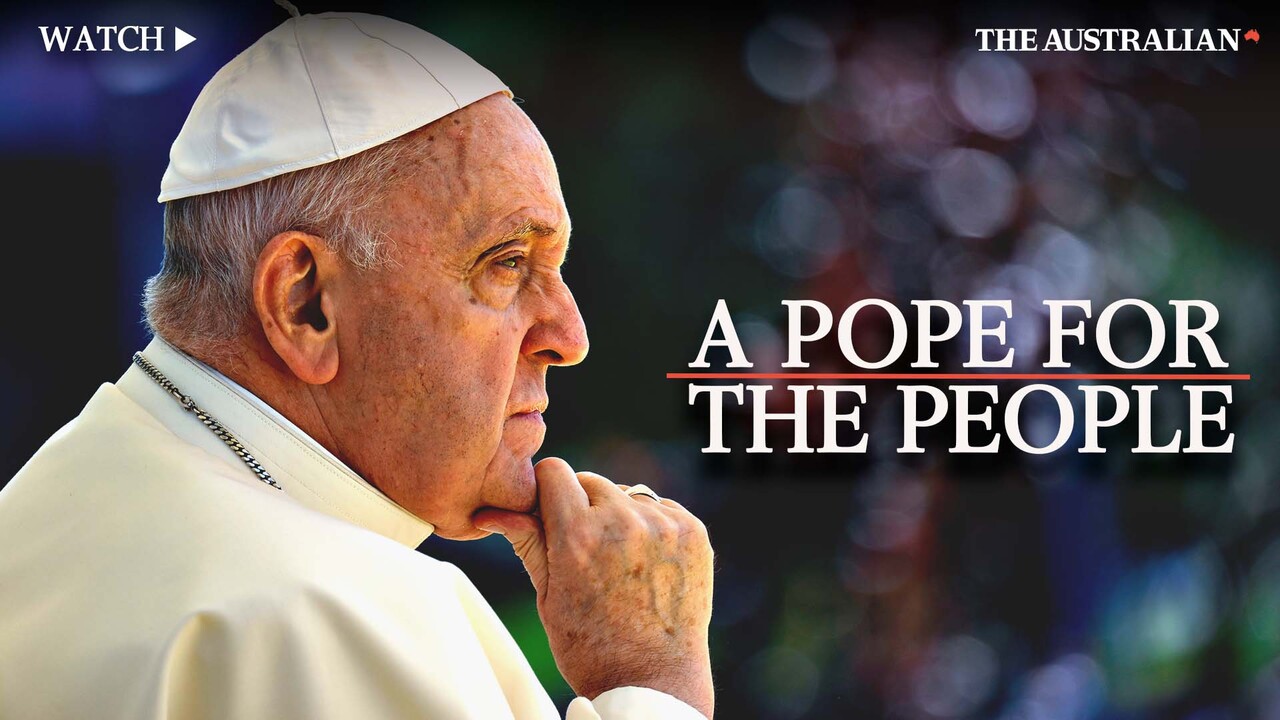
At heart, he yearned to shake up the world’s Catholics. At the World Youth Day festival in Rio de Janeiro, in 2013, he urged millions of young believers crowding on to the beach at Copacabana to “make havoc”, through loving deeds, in their home parishes. The great danger, he feared, was that the church would get too comfortable and lose the revolutionary spirit of service to the poor and marginalised implicit in the Gospel.
His distaste for global capitalism emerged in Laudato Si, his 2015 encyclical on the environment. Fears that he favoured left-wing politics were not allayed by a visit to Fidel Castro. When Americans accused him of “pure Marxism”, Francis brushed this aside. “The ideology of Marxism is wrong,” he said, “but I have met many Marxists in my life who are good people, so I don’t feel offended.”
On February 5, 2019, he became the first Pope to celebrate Mass on the Arabian peninsula, the birthplace of Islam: a crowd of 135,000, many of them foreign workers, attended mass in Abu Dhabi.
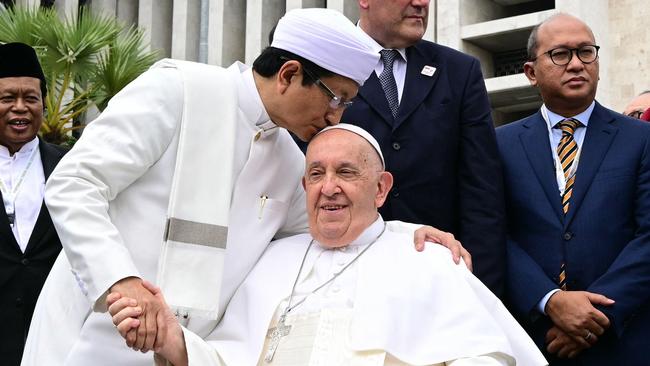
The Latin mass controversy
In his younger years in Argentina, he had been accused of autocracy while a Jesuit superior. Even wholehearted champions of Pope Francis were surprised when he issued a crackdown on the use of the pre-1962 Latin Mass. In 2007, Pope Benedict had restored the use of the Latin liturgy used in the Catholic Church for 500 years until it was replaced by the vernacular liturgy after Vatican II.
Francis reversed Benedict’s dictum in 2021, saying bishops had to give permission for the pre-1962 liturgy to be celebrated in their dioceses. He declared the ruling necessary because the old liturgy was a source of disunity, favoured by Catholics opposed to the reforms of Vatican II who hankered after a church that no longer existed.
In practice, some bishops simply allowed pre-1962 liturgies to continue. This led to Francis tightening the restrictions in 2023. He told bishops they had to apply to the Vatican for permission to allow priests in the diocese to celebrate the old Latin Mass.
The ruling caused uproar among traditional Catholics. One English priest told BBC Radio 4’s Sunday program: “I feel Pope Francis hates me and people like me.”
With his habitual frankness, Francis described the reaction of conservative critics as a “rash that bothers you a bit”. He added: “The only thing I ask is that they do it to my face, because that’s how we all grow.” Some found his bluntness refreshing: “With Francis, what you see is what you get,” the editor of one international Catholic journal observed.

Health and rest
In Buenos Aires, Francis had famously never smiled – his nickname was “horseface”. Being pope, said friends from Argentina, had “transformed” him: he had sparkle, a fresh energy. He admitted he was less tense, explaining: “From the moment I was elected I had a very particular feeling of profound peace. And that has never left me.” He slept “like a baby” and his remedy for worry was to write a problem on a slip of paper that he then placed beneath a statue of St Joseph in his bedroom. Francis rose every morning at 4am and was known for his stamina, but his health weakened in recent years and he underwent colon surgery in 2021.
Illness did not abate what some regarded as “meddling” in politics and others as prophetic Christian witness. Before entering hospital with bronchitis in February, he issued a letter to the Catholic bishops of America, urging them to stand up to Donald Trump’s policy of mass deportation of illegal immigrants.
By the time of Benedict’s death in 2022, Francis had emerged as a polarising pontiff. His agenda for church reform – which he felt was vital given the challenges of the age – was enthusiastically championed by members of “Team Francis” but rejected by younger, conservative Catholics whose influence was heightened by social media.
To the end, he retained an air of unpredictability: he once unexpectedly suggested a change to the wording of the Lord’s Prayer. “I can only think God must be surprising Francis the whole time because he is surprising us, on a daily basis,” observed a Briton employed by the Curia.
Yet Francis rejected claims that he was leading a revolution. “All I am trying to do is advance the Gospel,” he explained. “But imperfectly because sometimes I make mistakes.”
Pope Francis I was born on December 17, 1936. He died on April 21 aged 88.
The Times

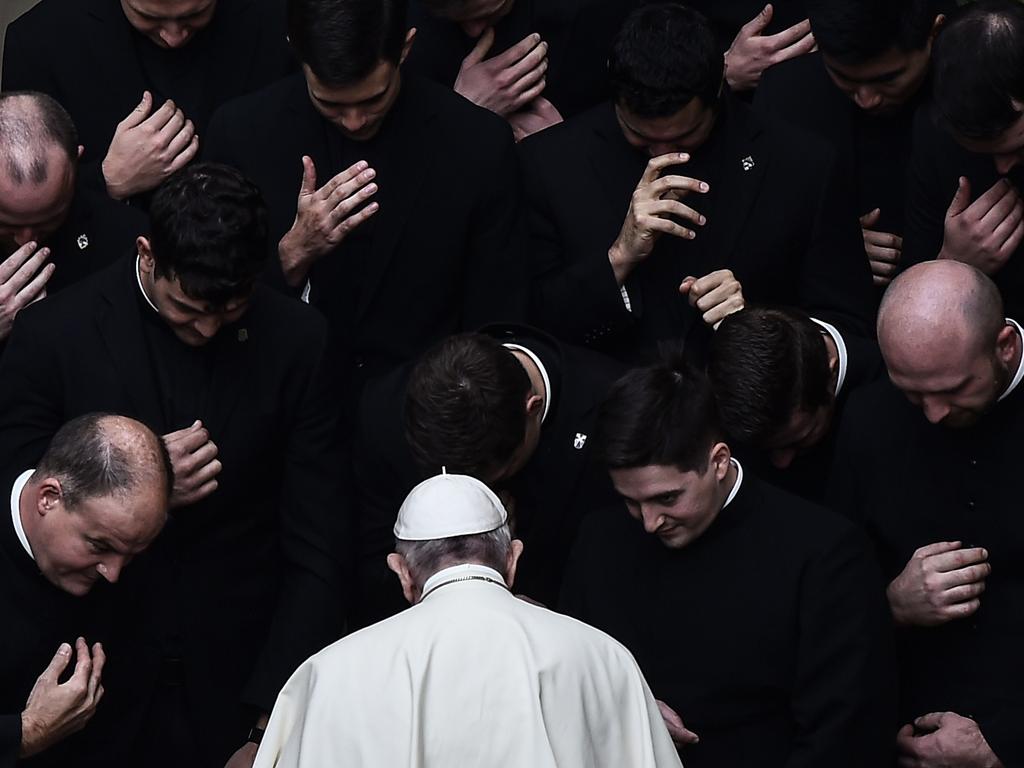
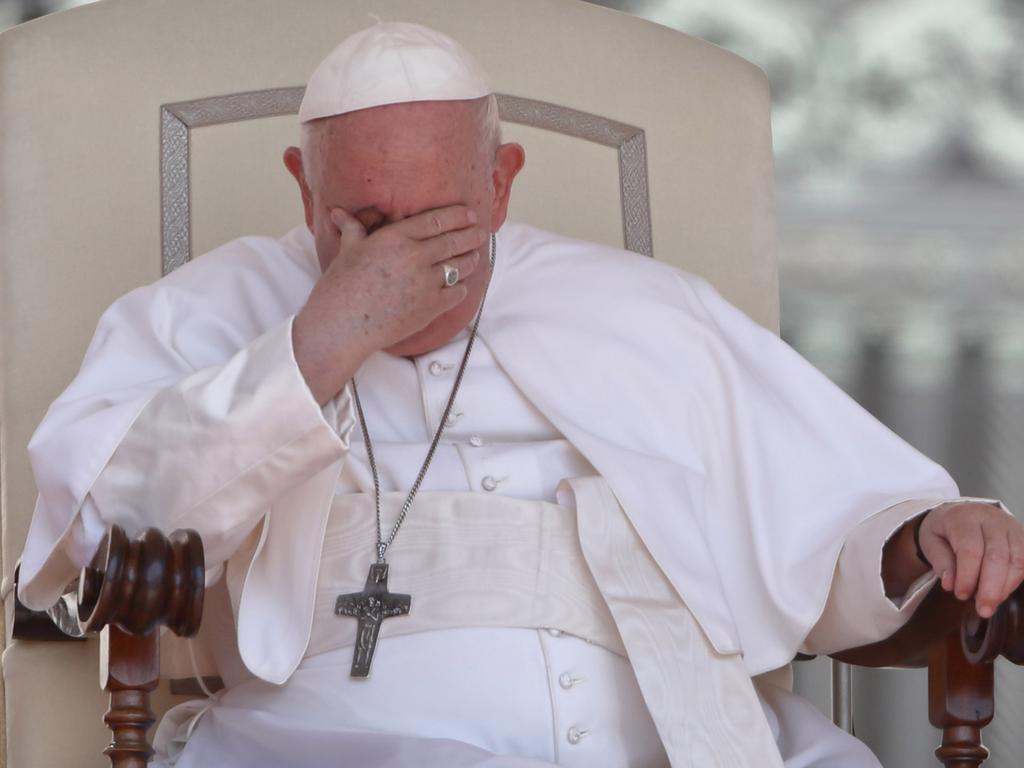


To join the conversation, please log in. Don't have an account? Register
Join the conversation, you are commenting as Logout